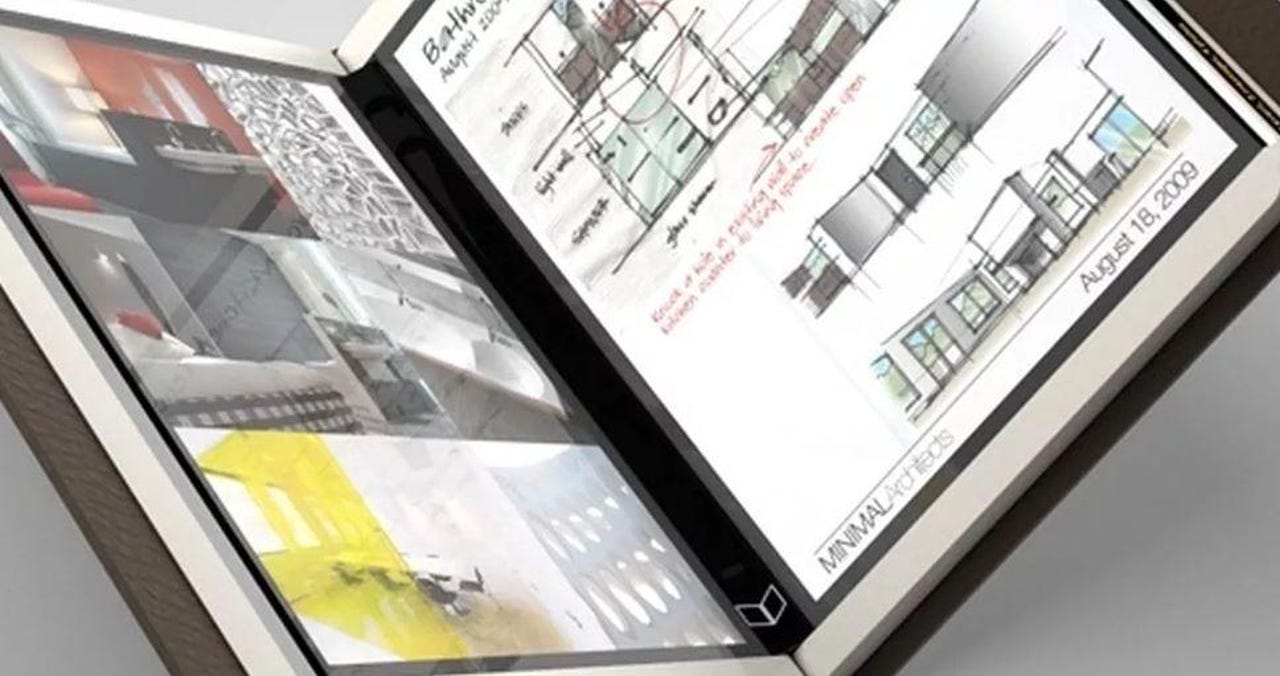Microsoft shows off its 'Centaurus' dual-screen laptop ahead of Apple's WWDC

The cancelled Microsoft Courier prototype
Just days before Apple's annual WWDC developer conference kicks off, Microsoft's hardware team did something I believe to be unprecedented. The team showed off internally a prototype of an unannounced device: Its rumored "Centaurus" dual-screen laptop. Usually, the Surface team operates very secretly, trying to keep its unannounced devices hidden from most of its own employees.
See als
As first reported by The Verge, Microsoft officials showed off to some employees at an all-hands meeting last week high-quality renders of the Centaurus Surface device. I've heard the same from my contacts. Apple's Worldwide Developer Conference coincidentally (or not) starts today, June 3.
Centaurus, according to sources, is a dual-screen laptop that Microsoft has been building in the wake of the tabling of its Andromeda dual-screen pocketable device. Centaurus is believed to be among Microsoft's first batch of Windows Core Operating System (WCOS) devices.
My sources have said Centaurus needs a Windows shell that supports dual-screen hardware, which means "Santorini," the shell that is part of Microsoft's still-officially-unannounced Windows Lite OS. Windows Lite -- which may not be called "Windows" at all once it debuts -- is Microsoft's Chrome OS competitor, sources have said. Like Chrome OS, Lite is meant to make app updating more seamless, startup faster and computing more secure and manageable.
If you feel like you've heard about a Microsoft-branded dual-screen laptop before, you wouldn't be wrong. Microsoft historians may remember the "Courier" dual-screen device which Microsoft never brought to market. Microsoft dropped plans for the Courier in 2010.
Some of Microsoft's PC partners have been providing glimpses lately of plans for dual-screen Windows laptops. I'd assume these Windows laptops also will require a Windows shell that supports dual-screen computing, which, again, seems to point to Windows Lite/Santorini. (Santorini is believed to be the codename for the shell for Windows Lite.) Unlike Windows RT and Windows 10 S Mode devices, Windows Lite PCs are expected (at some point, and likely via lightweight virtual machines) to be able to run Win32 apps not just Universal Windows Platform/Store apps, which might broaden their appeal.
Lately, I've heard Microsoft is likely to launch Windows Lite in 2020, which would point to Centaurus possibly also not being ready until next year. Microsoft may officially unveil Lite (and Centaurus) later this year, sources have said.
Must-see offers
I've heard the "all-hands" meeting where Microsoft execs showed off the Centaurus prototypes coincided with yet another Windows-related reorg, announced internally on May 31. Microsoft often reorders the corporate org chart ahead of the start of its new fiscal year (July 1).
I've heard from a couple of contacts that Microsoft is continuing to try to figure out which teams in the Windows organization should stay part of the Azure engineering org's COSINE (Core OS and Intelligent Edge) unit. Sources say Microsoft moved the Inking, Accessibility services and more AI services under Corporate Vice President of Essential Product Group Joe Belfiore's team, which is part of the larger Microsoft Experiences & Devices organization.
In early May, Microsoft moved the OneNote, Sticky Notes and To-Do teams under its Mobile and Cross Platform Experiences group, which is also part of Belfiore's organization.
When I asked Microsoft officials about last week's reorg, they declined to comment.
